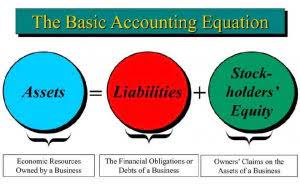
With the free time you gain, you can now pursue exciting and fast-moving business opportunities. Businesses can use video conferencing software and webinars to organize training and provide valuable content to their employees. You do not have to train all your employees at once, you can schedule a few for early training and have them share what they learned with their colleagues. The reason why it is so important is that any migration carries that risk of losing or corrupting data. If you are consolidating and standardizing data from various applications into the ERP system, you have to be extra careful.
Small Business ERP
- Microsoft Dynamics adopts a modern approach to ERP by using Artificial Intelligence (AI), machine learning, and a hybrid of virtual reality and reality (mixed-reality tools).
- Investments in information technology boast the distinction of being the category responsible for the largest expenditures within the U.S.
- EATM can employ a staging table, web services, or system–specific program interfaces (APIs).
- Replacing core systems can be a daunting task because of the variety of connections to other applications.
- They can use portable devices such as smartphones and desktop devices to access information and reports from anywhere there is an internet connection.
- Software-as-a-service (SaaS)Enter the cloud—specifically, the software-as-a-service (SaaS) delivery model for ERP.
- Members working on a project can easily collaborate even though they are not in the same departments or locations with the PSA module.
Companies involved in manufacturing or distribution typically add a supply chain management (SCM) module to track inventory levels and manage warehouses and transportation across the supply chain. If their business needs are complex, they might add a warehouse management system (WMS) and transportation management system (TMS) — perhaps from different software vendors — to manage these logistics functions. One example of ERP is industry-specific ERP systems that meet the specific requirements for those business types and offer industry-specific capabilities like materials planning and specialized manufacturing records management. Because these systems offer such tailored features, businesses don’t have to do too much customization or integrate with many other external tools. Another critical consideration for any ERP implementation is managing integrations to other software systems. For example, you may want to integrate legacy boundary applications that sit on a different platform.
Two-tier enterprise resource planning

It is no surprise that businesses spend lots of money to improve their customer relationships. With the information provided by this module, businesses can increase their fulfillment and delivery times which will result in a better customer experience. The manufacturing module assists companies in coordinating all the processes that go into manufacturing products.
- Since ERP systems are very complex, it is reasonable for only larger businesses to install them.
- Leaders and managers across different departments can use the information in the ERP system to determine how well the warehouses are performing.
- Characteristics of households are based on persons usually residing in a dwelling.
- All such information is provided solely for convenience purposes only and all users thereof should be guided accordingly.
- By staying ahead of these trends and continuously improving their ERP systems, businesses can remain competitive and capitalize on the full potential of Enterprise Resource Planning.
How Enterprise Resource Planning Platforms Work

As noted earlier, this disaggregation process does not need to touch those functional domains, such as accounting or controlling, that perform standard operations within the ERP system. Only those functions that are often part of a tightly coupled core for no functional reason, such as warehouse management, demand forecasting, or transportation, are candidates to reside outside of the core ERP system. The tight coupling between these two business domains in the ERP system meant that the changes needed in distribution were limited by system dependencies with warehouse management. With many businesses pursuing both digital transformation and mobility initiatives, cloud software is becoming a more and more attractive option to increase agility and future-proof operations.
Continue Learning about ERP and Other Enterprise Software
Integrations can cause unexpected delays and bust project timelines if they prove more complicated than expected. A huge benefit of a new ERP system should come from having trusted data that the organization can use to make their operating decisions. Sharing that data will likely involve integrations, so they need to be part of the implementation plan, with your new system acting as the enterprise hub from which to manage all of the data and integrations.


If your organization is growing beyond what QuickBooks can offer, Sage Intacct is one of the best QuickBook alternatives that provide more capabilities. The software integrates with other business applications such as Deltek, Sage, SAP, Microsoft Dynamics GP, and QuickBooks. Businesses can use help erp defined desk software as an online knowledge base to help employees quickly get over some issues. The project team should evaluate the ERP system at intervals to identify issues and potential issues. You cannot expect your employees including high-level managers to be proficient with the new ERP system.
- Other indicators to track can include IT-related milestones or percentage of migrated data.
- Population estimates have included these territories since the September quarter of 1993.
- Some will be around usage, such as number of employees using the system and how much they’re using it.
- A cloud-based ERP system will have software updates multiple times per year that you can choose (or not choose) to turn on.
- Project management involves keeping track of the project and ensuring that every key stakeholder can make input.
The statistics report on the number of international border crossings rather than the number of people (i.e. multiple movements of an individual traveller during a given reference period are each counted separately). OAD statistics include the movements of all travellers regardless of their nationality, citizenship, or legal status. Death statistics prior to 1971 are presented based on state or territory of registration. From 1971, they are presented based on the state or territory of usual residence of the deceased, regardless of where in Australia the death occurred or was registered. For Census dates, ERP is derived from usual resident Census counts, estimated net Census undercount, and the estimated resident population temporarily overseas on Census night.
Whether you’ve heard the term before, but aren’t sure what it means, or know the definition, but need more real-world context, don’t worry. And, at the end, we’ll provide all the necessary links for you to continue exploring. Someone on our team will connect you with a financial professional in our network holding the correct designation and expertise. Our mission is to empower readers with the most factual and reliable financial information possible to help them make informed decisions for their individual needs. Our goal is to deliver the most understandable and comprehensive explanations of financial topics using simple writing complemented by helpful graphics and animation videos.
Inventory stock, sales, and employee data from the various locations are fed directly into the ERP system. As these warehouses or locations input these data into the ERP system, it formats it so that it indicates where each data is coming from. By carefully evaluating these https://www.bookstime.com/ factors, organizations can decide on the best ERP vendor to meet their needs and requirements. A special report from the IBM Institute for Business Value in partnership with SAP. An ERP system doesn’t always eliminate inefficiencies within a business or improve everything.
For example, your business goals can be to save time and reduce cost and improve your relationship with customers. Using best practices, the ERP implementation stage does not have to be costly and time-consuming. With the right planning and implementation, you can reach your business goals, minimize risks and costs, and train employees on how to use the system effectively. Implementing ERP software is a complex process filled with lots of uncertainties.

